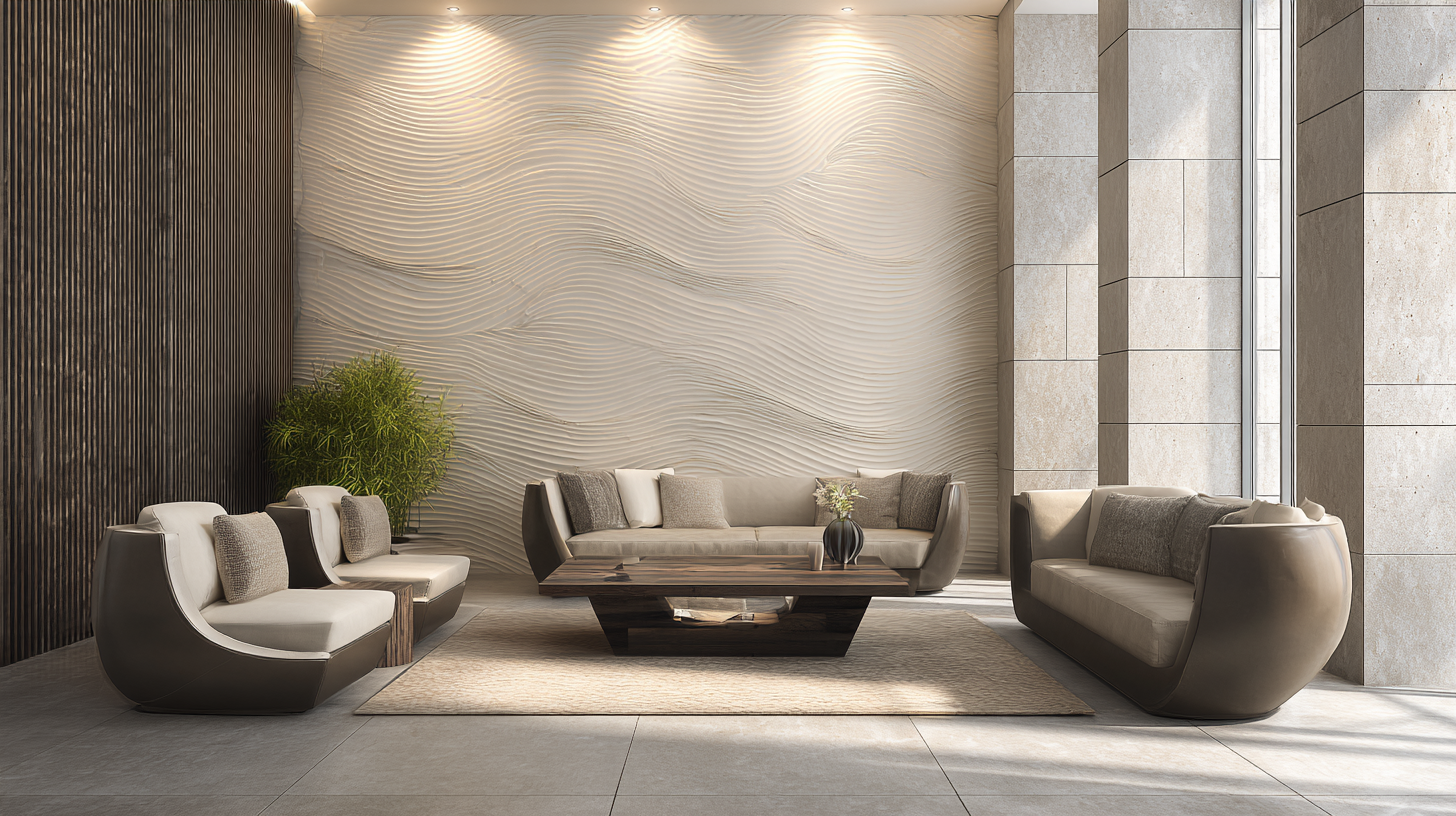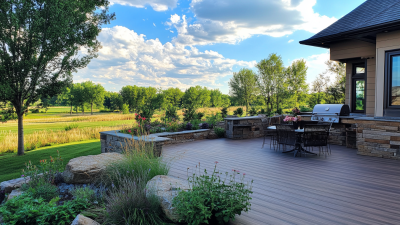Shandong Xiangying New Materials Technology Co., Ltd.
Shandong Xiangying New Materials Technology Co., Ltd.
In the ever-evolving landscape of modern construction, the demand for innovative materials that offer both aesthetic appeal and structural integrity is paramount. Among these materials, Composite Wall Panels have emerged as a leading choice for builders and architects alike. As industry expert Dr. Emily Parker noted, "Composite Wall Panels not only enhance the energy efficiency of buildings but also provide unparalleled design flexibility." This versatility makes them an ideal solution for a variety of applications—from commercial buildings to residential homes.

With sustainability at the forefront of construction practices, Composite Wall Panels are increasingly recognized for their ability to reduce energy consumption and minimize waste. As we look towards 2025, the market is brimming with options that cater to the diverse needs of modern architecture. This article will explore the top 10 Composite Wall Panels that are paving the way in contemporary construction, providing insight into their benefits, applications, and innovation in design. By focusing on this selection, we aim to guide builders and designers toward making informed decisions that will shape the future of buildings worldwide.
The evolution of composite wall panels reflects a broader trend in modern architecture that emphasizes sustainability, functionality, and aesthetic versatility. In recent years, the building industry has witnessed significant advancements in composite materials, which are lighter, stronger, and more energy-efficient than traditional materials. This transformation caters not only to the demands of contemporary construction but also to the challenges posed by climate change. As architects and builders seek to create resilient structures, composite wall panels have become a preferred choice for their adaptability to diverse environmental conditions.
Moreover, the evolution of architectural forms, as seen in various regions including China’s Hexi Corridor, demonstrates a responsive approach to local climates. This adaptability has led to innovative designs that not only enhance structural integrity but also complement the environmental context. In parallel, the trend of structural insulated panels (SIPs) reflects a growing inclination towards engineered solutions that optimize thermal performance. These developments underscore a new era in architectural design, where the integration of composite materials emerges as a key factor in achieving both functionality and aesthetic appeal in modern construction.
When selecting high-quality composite wall panels for modern construction, it is essential to prioritize several key features. First and foremost, durability is crucial. Look for panels that are resistant to weathering, UV rays, and impacts. Materials such as fiberglass-reinforced plastics or advanced composites can provide exceptional strength while maintaining a lightweight profile. Additionally, ensure that the panels have a reliable moisture barrier to prevent issues like mold and mildew, which can compromise the integrity of the structure over time.

Another important aspect to consider is insulation properties. High-quality composite wall panels should provide excellent thermal performance to enhance energy efficiency. This not only contributes to lower heating and cooling costs but also supports a more comfortable indoor environment. Furthermore, aesthetics should not be overlooked; panels should offer a variety of finishes and colors that complement the overall design of the building. Customization options that allow for architectural creativity can significantly enhance the visual appeal of the facade. By focusing on these key features, builders can choose the best composite wall panels to meet modern construction demands.
In the quest for energy efficiency and durability in modern construction, composite wall panels have emerged as a leading choice among architects and builders. These innovative materials not only provide excellent thermal insulation but also contribute to the overall sustainability of a building. By integrating advanced technologies and sustainable practices, composite wall panels help reduce energy consumption while maintaining robust structural integrity. Their lightweight nature and versatility make them suitable for a wide range of applications, from residential homes to commercial buildings.
As the building materials industry evolves, the focus on eco-friendly solutions has prompted the development of cutting-edge composite materials. Recent trends highlight the importance of optimizing mechanical, thermal, and acoustic properties to meet the growing demands for sustainability in construction. The rise of energy-efficient geopolymer wall panels exemplifies this shift, demonstrating how modern engineering can create solutions that align with both environmental objectives and performance expectations. This combination of energy efficiency and durability positions composite wall panels among the top choices for construction projects aiming to achieve long-lasting and environmentally responsible outcomes.
In the ever-evolving landscape of modern construction, choosing the right composite wall panel is crucial for optimizing both cost and performance. Recent industry analyses highlight that the market for composite wall panels is expected to grow at a compound annual growth rate (CAGR) of 5.1% from 2023 to 2028, reflecting a significant shift towards these materials due to their durability and aesthetic appeal. When comparing the top-rated options, cost-effectiveness without compromising quality becomes a critical factor. For example, panels made from high-density polyethylene (HDPE) provide an impressive balance of affordability and longevity, often outpacing traditional materials in both installation time and total life-cycle cost.

When selecting composite wall panels, consider the thermal efficiency ratings. Research indicates that panels with a thermal resistance (R-value) of R-20 or higher can significantly reduce energy costs over time. Additionally, various manufacturers offer warranties ranging from 10 to 30 years, which can be a deciding factor for long-term investments.
Tips: Always request samples and conduct side-by-side evaluations of not just costs but also performance characteristics. Inspect for certifications that ensure compliance with fire safety and insulation standards, as these can impact both regulatory approvals and operational costs in the long run.
As we move towards 2025, sustainability in composite wall panel production is becoming increasingly crucial in modern construction. According to a recent survey from the Global Green Building Council, over 70% of construction professionals prioritize sustainable materials in their projects. This shift reflects a growing recognition of the environmental impact of building materials, driving innovation in the composite industry to develop greener options. Manufacturers are now focusing on utilizing recycled materials and reducing carbon footprints throughout their production processes.
Tips: When selecting composite wall panels, opt for those certified by environmental standards such as LEED or BREEAM. This ensures that the panels contribute positively to sustainability in construction.
Moreover, innovations in production techniques, including the use of bio-based resins, are paving the way for more eco-friendly composite wall panels. Reports indicate that these advancements can lower production energy costs by up to 30%, making them not only beneficial for the environment but also economically viable. Embracing these trends will not only meet regulatory standards but also enhance the marketability of construction projects.
Tips: Stay informed about the latest advancements in sustainable building materials to ensure your projects remain competitive in a rapidly evolving market.






